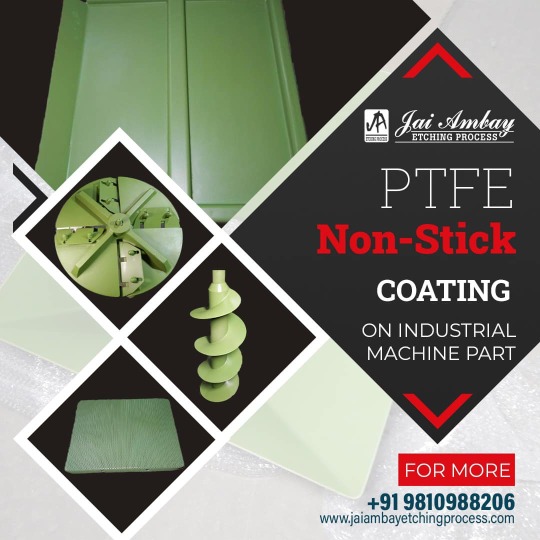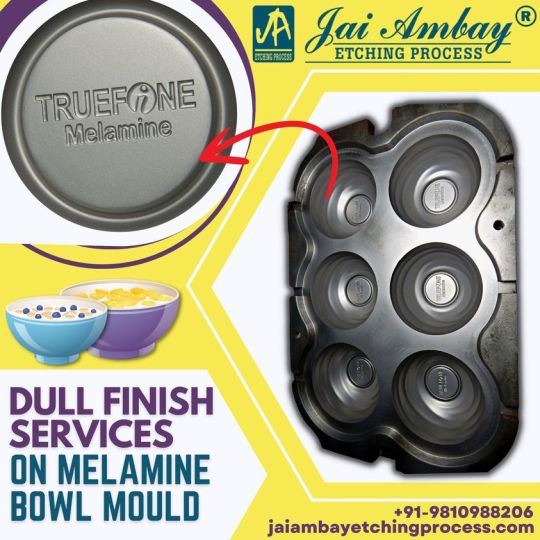Text
Unveiling the Benefits: Mould Tool Texturing with 5-Axis Laser
In the intricate world of manufacturing, every detail matters. From aesthetics to functionality, each aspect contributes to the success of the final product. One crucial element often overlooked is the surface texture of mould tools, which can significantly impact the quality and performance of manufactured parts. Enter 5-axis laser texturing—a cutting-edge technology revolutionizing the way mould tools are textured and bringing a host of advantages to the manufacturing process.

Advantages of 5 Axis Laser Texturing to the Manufacturing Process
Precision Perfected
Precision is paramount in mold tool texturing, where even the slightest imperfection can affect the quality of the finished product. With 5-axis laser technology, precision reaches new heights. The ability to maneuver in multiple directions simultaneously ensures intricate designs are faithfully reproduced with unparalleled accuracy. Whether it's complex patterns or fine details, 5-axis laser texturing delivers results that exceed expectations.
Versatility Unleashed
One of the standout features of 5-axis laser texturing is its versatility. Unlike traditional methods limited by tooling constraints, laser technology can texture a wide range of materials, from metals to plastics to composites. This versatility opens up endless possibilities for designers and engineers, allowing them to experiment with different textures and finishes to achieve the desired look and feel for their products.
Efficiency Elevated
Time is of the essence in manufacturing, and 5-axis laser texturing doesn't disappoint in this regard. With rapid scanning speeds and minimal setup times, the process is remarkably efficient. Complex textures that once took hours or even days to create can now be achieved in a fraction of the time, speeding up production cycles and reducing time-to-market for new products.
Consistency Assured
Consistency is key to ensuring every part meets quality standards. Traditional texturing methods often struggle to maintain consistency across large production runs. However, with 5-axis laser texturing, consistency is assured. The precise nature of laser technology ensures that each part is textured with the same level of accuracy, eliminating variations and reducing the likelihood of defects.
Sustainability Embraced
In today's environmentally conscious world, sustainability is no longer a choice but a necessity. Fortunately, 5-axis laser texturing aligns perfectly with sustainable manufacturing practices. By minimizing material waste and energy consumption, laser technology offers a more eco-friendly alternative to traditional texturing methods, helping companies reduce their environmental footprint without compromising on quality.
Conclusion:
In conclusion, the advantages of mould tool texturing by 5-axis laser are clear. From unmatched precision and versatility to elevated efficiency and consistency, this innovative technology is transforming the manufacturing landscape. As companies continue to seek ways to stay ahead in a competitive market, embracing 5-axis laser texturing is not just an option—it's a strategic imperative for success in the modern manufacturing era.
0 notes
Text

Discover Toy Car Treads: 5-Axis Laser Texturing Exhibit.
Discover precision engineering at its finest with our Crafting Toy Car Treads: 5-Axis Laser Texturing exhibit. Explore the cutting-edge technology.
#5axis#5axislasertexturing#5axislaser#5AxisLaserTechnology#5axislaserServices#5axislaserServicesProvider
0 notes
Text
#5axis#5axislasertexturing#5axislaser#5AxisLaserTechnology#5axislaserServices#5axislaserServicesProvider
0 notes
Text
3D Surface Etching Transforms Journey in Mould Manufacturing
Fueled by innovation and perfection, manufacturing evolves. A recent thrilling development is the fusion of mold-making artistry.
#laserengravingservicesindelhi#mouldengravingexpertsindelhi#ptfecoatingprocess#laserengraverformouldindelhi#nonstickcoatingprocess#tefloncoatingservices
0 notes
Text
Common Challenges in Implementing 5-Axis Laser Texturing Services
In recent years, 5-axis laser texturing has emerged as a cutting-edge technology in manufacturing, offering precise and versatile surface texturing capabilities. However, like any advanced manufacturing process, implementing 5-axis laser texturing solutions comes with its own set of challenges. Addressing these challenges effectively is crucial for maximising the benefits of this innovative technology. In this article, we delve into some of the common hurdles faced in implementing 5-axis laser texturing solutions and strategies to overcome them.
Common Challenges in Implementing 5-Axis Laser Texturing
Here are some common challenges in 5-Axis Laser Texturing with how to overcome this challenge.
Precision and Calibration:
One of the primary challenges in 5-axis laser texturing is ensuring precision and accuracy in the texturing process. Achieving the desired surface texture requires meticulous calibration of the laser system, as well as precise control of the positioning and orientation of the workpiece. Any deviation or inconsistency in calibration can lead to defects or inaccuracies in the textured surface.
How to fix: To overcome this challenge, manufacturers must invest in advanced calibration techniques and high-precision equipment. Regular maintenance and calibration checks are essential to ensure optimal performance. Additionally, employing advanced simulation software can help predict and optimize the texturing process, minimizing errors and improving overall precision.
Complex Geometries:
5-axis laser texturing offers unparalleled flexibility in creating intricate surface textures on complex geometries. However, the complexity of the part geometry can pose challenges in achieving uniform texturing across the entire surface. Variations in curvature, angles, and surface orientations require careful planning and optimization to ensure consistent texture quality.
How to fix: To address this challenge, manufacturers can leverage advanced CAD/CAM software tailored for 5-axis machining. These software tools enable comprehensive simulation and analysis of the texturing process, allowing engineers to identify potential issues and optimize toolpaths for complex geometries. Additionally, adaptive machining strategies can dynamically adjust laser parameters based on real-time feedback, ensuring uniform texture quality across diverse surfaces.
Material Compatibility:
The effectiveness of laser texturing can vary depending on the material composition of the workpiece. Certain materials may exhibit undesirable effects such as melting, recasting, or thermal damage during the texturing process. Moreover, the surface properties of different materials can impact laser absorption and energy transfer, affecting the texture quality and efficiency of the process.
How to fix: To mitigate material compatibility issues, manufacturers should conduct thorough material testing and characterization prior to texturing operations. Understanding the thermal properties, reflectivity, and absorption characteristics of various materials can help optimize laser parameters for enhanced performance and texture quality. Additionally, exploring alternative laser sources or auxiliary cooling systems can expand the range of materials compatible with laser texturing processes.
Surface Finish and Texture Control:
Achieving the desired surface finish and texture consistency is essential for meeting quality standards and aesthetic requirements in various industries. However, controlling the texture depth, roughness, and pattern fidelity can be challenging in 5-axis laser texturing, especially when dealing with intricate designs or fine details.
How to fix: To overcome this challenge, manufacturers can employ advanced process monitoring and feedback systems to dynamically adjust laser parameters during texturing. Real-time surface inspection techniques such as optical profilometry or laser scanning can provide valuable feedback for optimizing texture quality and consistency. Additionally, implementing closed-loop control systems enables automatic adjustment of laser parameters based on desired texture specifications, ensuring precise and uniform results.
Conclusion:
Implementing 5-axis laser texturing solutions presents a myriad of challenges, ranging from precision and calibration to material compatibility and texture control. However, with careful planning, advanced technology, and strategic optimization strategies, these challenges can be effectively addressed to unlock the full potential of laser texturing in manufacturing. By overcoming these hurdles, manufacturers can achieve superior surface textures, increased productivity, and enhanced competitiveness in today's demanding market landscape.
#5axis#5axislasertexturing#5axislaser#5AxisLaserTechnology#5axislaserServices#5axislaserServicesProvider
0 notes
Text
3D Surface Etching Transforms Journey in Mould Manufacturing
Fueled by innovation and perfection, manufacturing evolves. A recent thrilling development is the fusion of mold-making artistry.
#MouldSurfacetexturesserviceprovider#PlasticMouldTextureservices#AfforadableMouldTexturinginIndia#MouldPolishing
0 notes
Text
The Best Laser Engraving and Etching company in India
Explore precision at Jai Ambay Etching Process, offering laser marking, coating, and etching services in India. Our designs add a unique touch to your product.
#tefloncoatingservices#laserengravingservicesindelhi#mouldengravingexpertsindelhi#3dlaserengravingdelhi#ptfecoatingprocess
0 notes
Text
5 Axis Laser Texturing | Jai Ambay Etching Process
Explore infinite horizons of surface transformation with 5-axis laser texturing us – for more information contact - Jai Ambay Etching Process. Try now!
#3Dlaserengraving#engravingservices#Tefloncoatingservices#PTFEnonstickcoating#chemicaletchingservices#laseretchingcompanies#PTFEcoatingprocess#PTFEcoatingservices#steelengraving#waterbasedcoating
0 notes
Text

Transform your roti-making game with our food-grade coating. Enjoy non-stick perfection every time! Try it now! For more information and to request a quote, contact us at www.jaiambayetchingprocess.com or call us at +91 9810988206.
#Ecoatingservice#Tefloncoatingservices#Ptfenonstickcoatingservice#ptfecoatingprocess#ptfecoatingservices#waterbasedcoatingservice#Tefloncoatingonstainlesssteel#3Dlaserengravingservices#chemicaletchingservices#laseretchingcompanies
0 notes
Text
Elevate Quality: Excellence E-Coating on Shoe Mould
In this blog, we will explore the wonders of electrocoating, its non-stick coating process, and how it's revolutionizing the mold world. Visit our blog now!
#tefloncoatingservices#Ecoatingservice#Tefloncoatingservices#Ptfenonstickcoatingservice#ptfecoatingprocess#ptfecoatingservices#waterbasedcoatingservice#Tefloncoatingonstainlesssteel#3Dlaserengravingservices#chemicaletchingservices#laseretchingcompanies
0 notes
Text

Best PTFE Nonstick Coating Services Near me in Delhi
PTFE Coating Purposes for Machine Parts is Corrosion. The best solution to prevent corrosion is to apply an industrial coating to vital parts. If you are looking for PTFE coating services you can contact us at www.jaiambayetchingprocess.com or call us at +91 9810988206.
#Ptfenonstickcoatingservice#tefloncoatingonstainlesssteel#tefloncoatingservices#engravingservices#ptfecoatingservices#Chemicaletchingservices#Laserengravingservice#Lasermarkingservice#metalengravingservices
0 notes
Text
Revitalizing Surfaces: Sand and Shot Blasting for Moulds
#SandandShotBlastingServices#Chemicaletching#Laserengraving#Lasermarking#metalengraving#MetalEngravers#laseretching#Ecoating#3Dlaserengraving#engravingservices#Tefloncoatingservices#PTFEnonstickcoating#chemicaletchingservices
0 notes
Text
Revitalizing Surfaces: Sand and Shot Blasting for Moulds
In this blog, we will explore how Sand Blasting services, are often offered by photochemical etching companies. Sand & Shot Blasting services play an important role in revitalizing molds and extending their operational life.
#SandandShotBlastingServices#Chemicaletching#Laserengraving#Lasermarking#metalengraving#MetalEngravers#laseretching#Ecoating#3Dlaserengraving#engravingservices#Tefloncoatingservices#PTFEnonstickcoating#chemicaletchingservices
0 notes
Text
About Us | Jai Ambay Etching Process
Jai Ambay Etching Process is a leading service provider of Chemical Etching, Laser engraving, and Coating. Click here to learn more and get a quote today!
#Chemicaletching#Laserengraving#Lasermarking#metalengraving#MetalEngravers#laseretching#Ecoating#3Dlaserengraving#engravingservices#Tefloncoatingservices#PTFEnonstickcoating#chemicaletchingservices#laseretchingcompanies
0 notes
Text

Melamine Molds with a Dull Finish: Jai Ambay Etching Process
Enhance your melamine molds with a dull finish service! Transforming them into elegant masterpieces. Try it now! For more information and to request a quote, contact us at www.jaiambayetchingprocess.com or call us at +91 9810988206.
#Chemicaletching#Laserengraving#Lasermarking#metalengraving#MetalEngravers#laseretching#ecoating#3Dlaserengraving#engravingservices#tefloncoatingservices#Ptfenonstickcoating#chemicaletchingservices#laseretchingcompanies
0 notes
Text
#Chemicaletching#Laserengraving#Lasermarking#metalengraving#MetalEngravers#laseretching#3Dlaserengraving#engravingservices#Tefloncoatingservices
0 notes
Text
In this blog, we will explore the fascinating world of sand and shot blasting services, exploring how they enhance the performance and durability of molds. We provide top-notch blasting services, that exceed our client’s expectations.
#SandandShotBlastingServices#Chemicaletchingservices#Laserengravingservice#Lasermarkingservice#metalengravingservices#MetalEngravers#laseretchingservices#engravingservices#tefloncoatingservices#chemicaletchingservices
0 notes